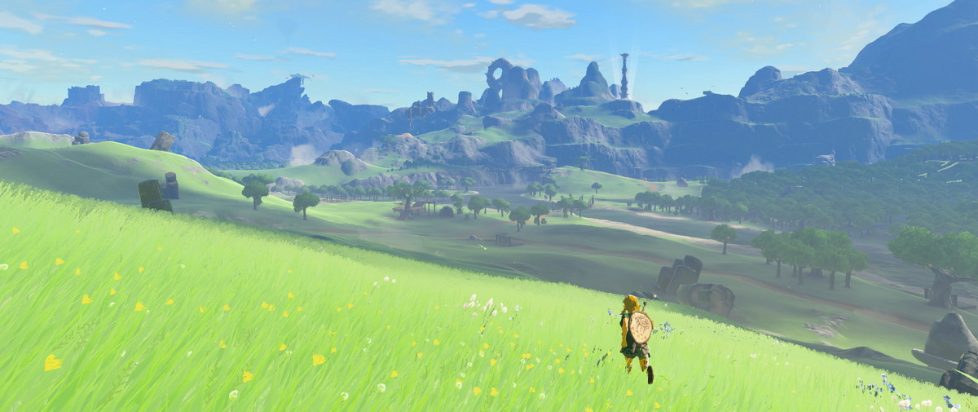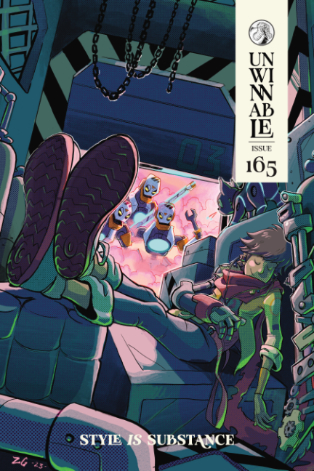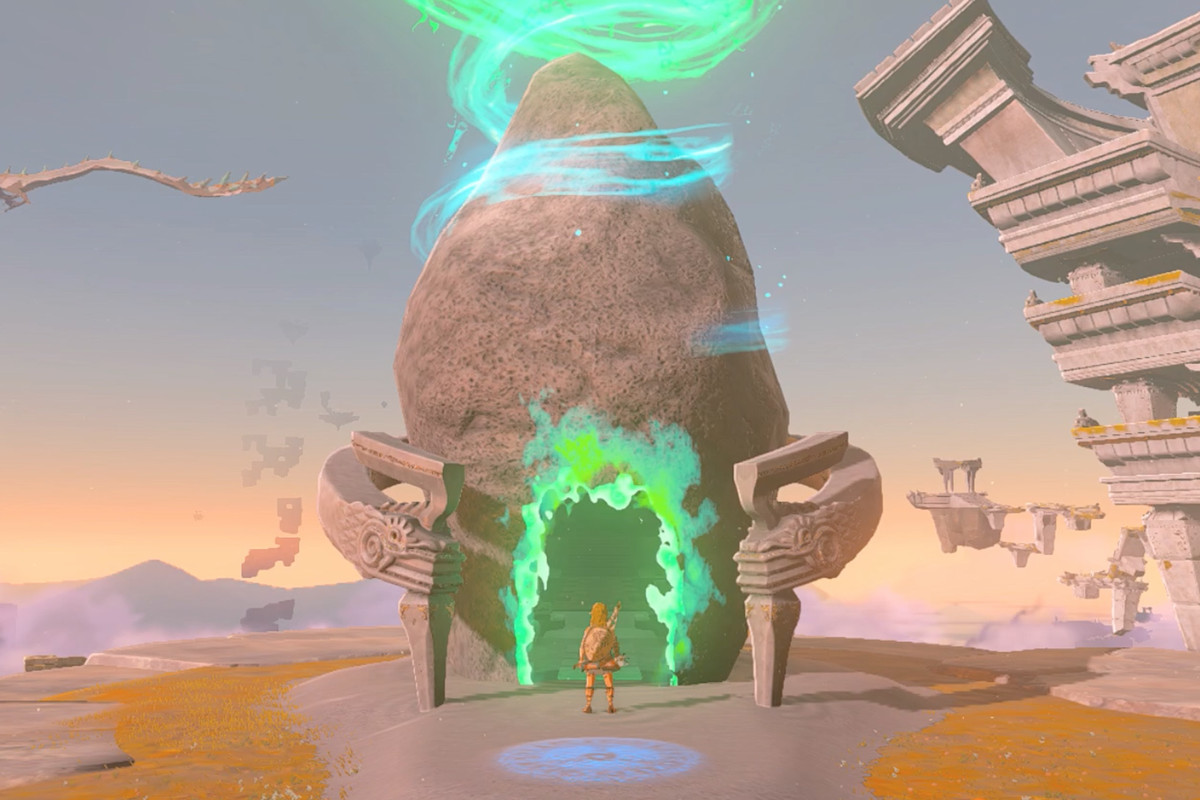
On Play in Tears of the Kingdom

This column is a reprint from Unwinnable Monthly #165. If you like what you see, grab the magazine for less than ten dollars, or subscribe and get all future magazines for half price.
———
Reframing the boundaries of what is seen and unseen…
———
The wide-open, emergent gameplay design of The Legend of Zelda: Breath of the Wild never spoke to me. A conflicting feeling given that the promise of Breath of the Wild delivered on the dream of what I wanted as a kid – a sprawling open world, a horse, and plenty of secrets to discover.
Despite those feelings, I picked up the sequel, Tears of the Kingdom, and have been blown away by how invested I am in this entry. There are a few reasons why I think that’s the case. The world and mechanics in Tears feel more fleshed out, and the opening area – high up in the sprawling sky islands – set me up better to dive into the systemic design these two entries hinge upon. But the most pleasant surprise for me in this outing with Link and Zelda is the ways in which the new mechanics (Ultrahand, Ascend and Fuse) create infinitely expressive play sessions that vastly differ from player to player.
While I enjoyed watching clips of BotW where absurdly good players pull off glitches, crazy combat combos and traversal hacks, I knew that I’d never come close to doing something similar. This made me feel like the most interesting parts of the game were withheld from me for sheer lack of ingenuity on my part. In Tears, Nintendo has found a much more captivating approach to its play design by allowing players to approach challenges in a seemingly infinite number of ways. There is a true sense of “play” in this game that very few others of this variety and scale allow players to experience. Where I see this most is in the pleasure I’ve had in watching the game unfold in real time as I watch my partner – who doesn’t play many videogames – play Tears.
In my household, Tears ripped the fabric of time and space itself, creating a mirror world between my play experience and my partner’s. I’ve never been one to enjoy watching extended plays of games or full playthroughs, but I’m finding just as much joy in playing Tears as I am watching my partner play.

This entry brings me back to the days before I was chained to the constant stream of discourse that modern gaming in the wake of the internet can revolve around. Instead, I think about times from my childhood where answers to riddles, challenges and secrets in a game were discovered and disseminated through word of mouth on the playground and in basements; between friends and random encounters with kids you’d happen upon in your daily life. I even have a private Slack channel where my friends and I report our latest findings, tips, tricks and random musings around the game as we play. The only other game to do this for me are From Software’s Souls games and that has less to do with the “play” design I reference above, and more to do with the obfuscation of the mechanics that are inherent to that franchise.
The vastness of terrain in Tears also adds to a sense of discovery and storytelling that feels special. Recently, I interviewed Victor LaValle, acclaimed Black fiction writer who is most known for his use of horror, monsters and other speculative elements in his work to deal with complex themes. When I asked him about why he is so drawn to putting monsters into his stories he told me, “The amazing thing about writing monsters is they can show readers the immensity of a feeling in a way that just using the basic facts of a situation often can’t do.”
LaValle’s point about how writing monsters allows him to place his reader into a feeling instead of a fact of life should be the ethos of videogames as a medium full stop. The best games are more than a facsimile of reality, they are also more than just a series of mechanics strung together to create something that can be started and finished. To me, games are at their best when they blend their mechanics, narrative (if they have one) and worlds together. They make the interactivity inherent to the medium a part of the meaning making the player will have as they play. Even the most story-driven, narrative-heavy titles live and die through how they can capitalize on the interactive elements present in order to make player actions feel impactful even in a story that has a clearly defined, linear trajectory. If this ethos isn’t inherent to the medium, then why is it interactive? It’s about embodiment instead of spectatorship.
The cacophony of vast landscape, systemic interactions and the new mechanics at Link’s disposable in Tears, has unlocked a true feeling of adventure – one that makes me feel like I am on a grand journey due to the fact that my experience will inherently be vastly different than that of my friends.

My partner plays Tears in a methodical way. Quite literally no rock is left unturned. There’s a feeling of true wonder when I watch her play because she is unencumbered from a life lived playing videogames with systems and stories that have been compounded, remixed, reframed and reused again and again. Each encounter has a freshness to it for her that also allows me to see gaming through a new lens, to really feel the adventure she is on. This is no better encompassed than in watching how she approaches any given shrine puzzle versus how I do.
When I play through a Shrine, I’m less interested in the actual design of the solutions I build with Ultrahand or the physics needed to complete a puzzle. What this often leads to is me brute forcing these levels or simply finding the quickest, most low effort solution there is. For my partner, she’ll often make complex designs that are painstakingly built before she’s willing to deploy them. This kind of divergence in approach is something that many games wouldn’t allow and clearly one of Tears greatest strengths.
In that sense, Tears provides a true sandbox experience that many games have been rushing towards for years now. Here is your sand, what will you make? The beauty of it is that no two players’ creations will be exactly the same and that in turn is because of the mechanics, the stories that led them to any given Shrine, and their own institutional knowledge that they bring into each encounter.
In Tears of the Kingdom, I feel like I can truly embody Link as a player avatar and be a hero that I might not always be willing to be in real life. Willing to plunge into the darkness without a floor insight; fly across great expanses without a care in the world. Create something new unencumbered by fears of external validation.
———
Phillip Russell is a Black writer and podcast producer. His writing explores the intersections between pop culture, Blackness, and our connection to land and identity. Follow his work on Twitter @3dsisqo.




